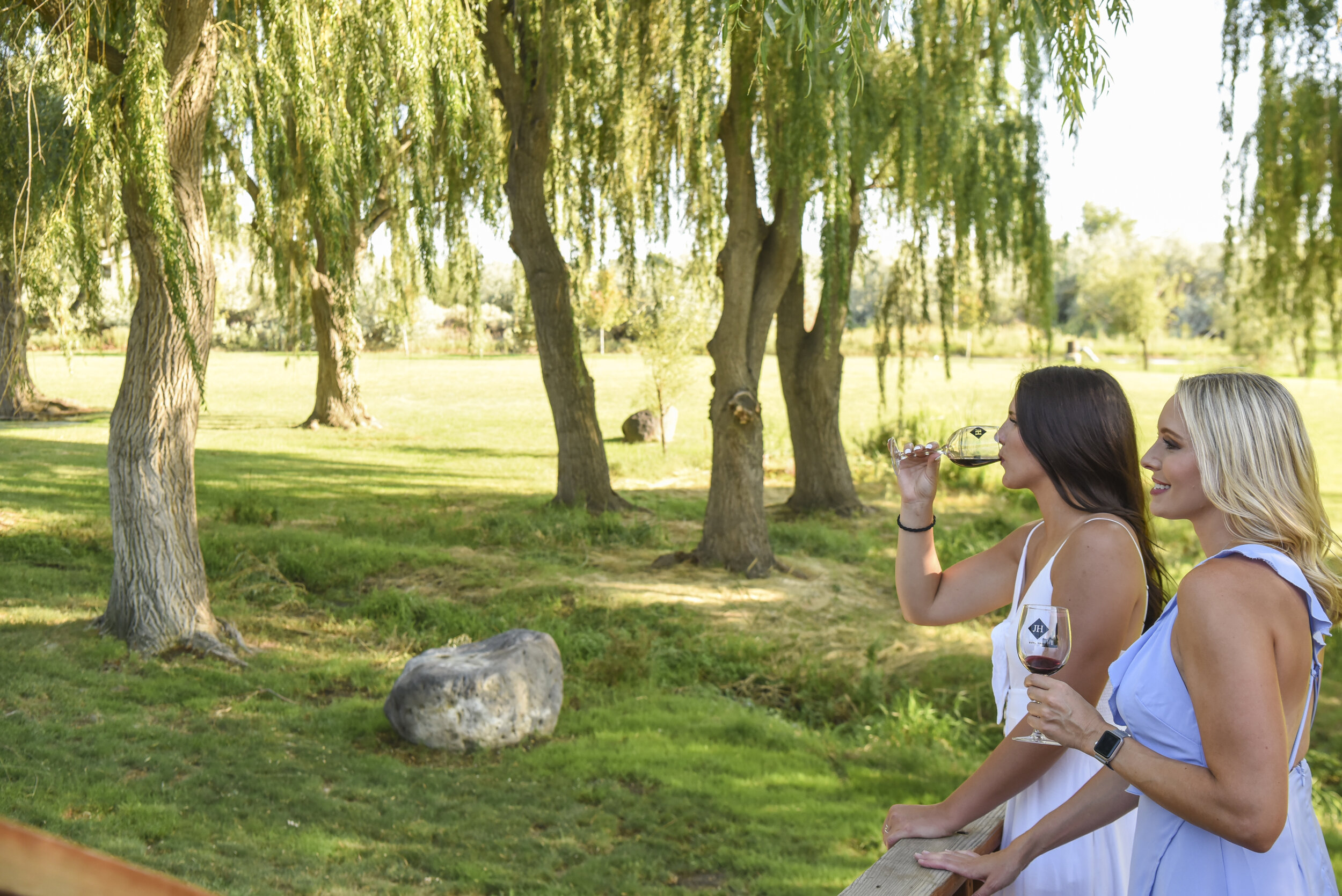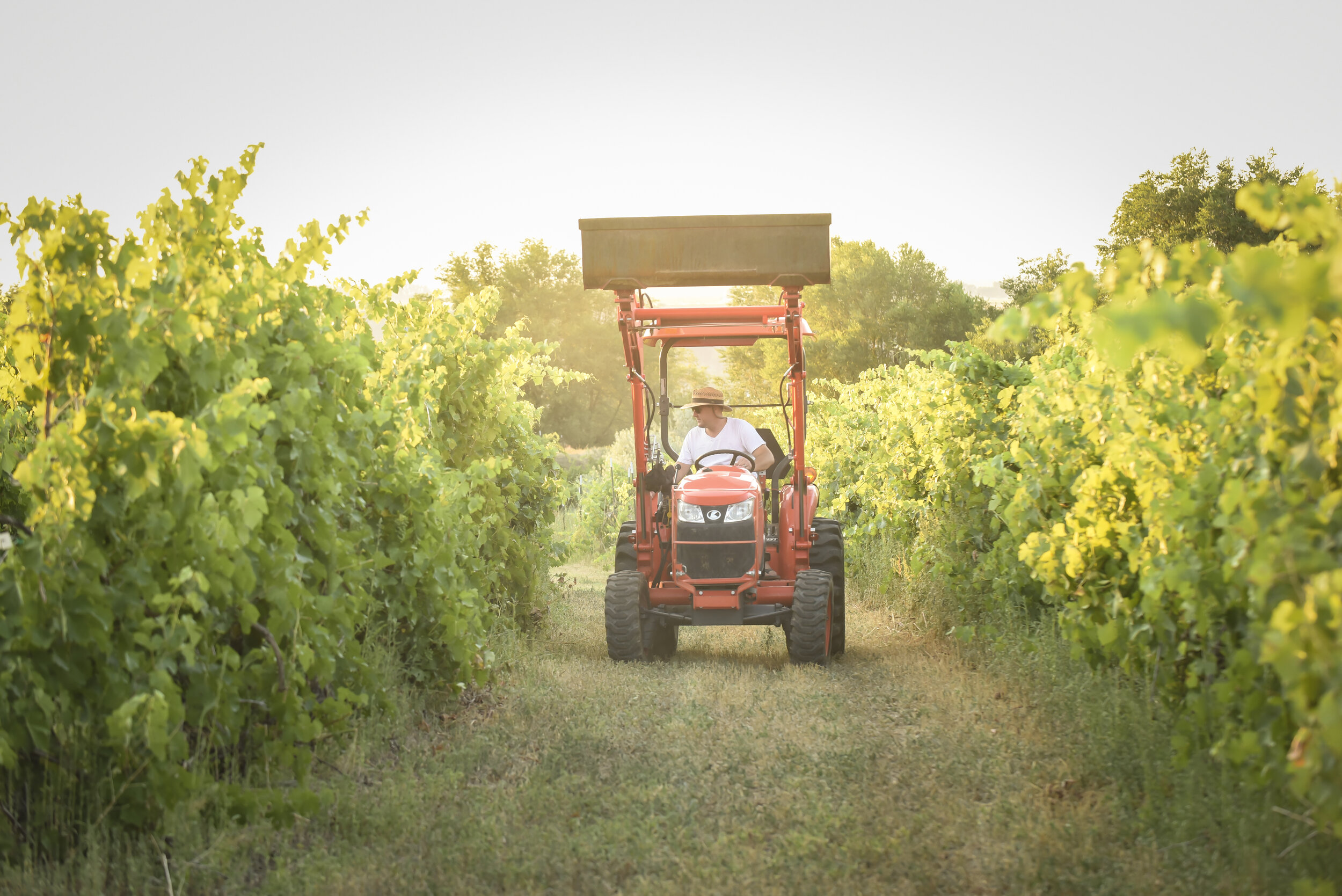
Our Land
Southern Idaho’s unique geology is one of the reasons our wines are so special
Holesinsky Vineyard & Winery has been proudly producing organically grown grapes for the past 19 years. Our vineyard is free of glysophates, chemicals & pesticides and we do not use any synthetic fertilizers, weedkillers or fungicides. We rely on Idaho’s unique soil composition and TLC to produce the beautiful grapes from which our wines are born.
Southern Idaho - A lesson in Geology and Winemaking
Basking in the peaceful tranquility that is now Holesinsky Winery, it is hard to imagine the cataclysmic geological events that once took place here – events that spanned over hundreds of millions of years – and were necessary to create our perfectly blended loam soil.
It all started 600 million years ago, when the 40-mile-wide Beaverhead Asteroid plowed into southern Idaho, leaving a massive trove of mineral-rich, cosmic-born bounty in its wake.
Next followed 16 million years, and seven massive eruptions, of the Yellowstone volcanic caldera. As our tectonic plate glided slowly southwestward over the Yellowstone hotspot, southern Idaho was covered in layer after layer of rich, grape-quenching volcanic soil.
Finally, to mix it all up into the perfect loam blend, we can give thanks to the ice-age Bonneville Flood. 17,000 years ago, Lake Bonneville overflowed its banks, sending water at 33 million cubic feet-per-second surging down the Snake River canyon! The deluge finally slowed and settled right here in our valley, leaving behind the rich, perfectly blended, grape-nourishing soil that we enjoy today.
It is hard to believe that all these cataclysmic events in the past gave birth to something so beautiful now – the pure loam topsoil that Holesinsky Winery is blessed with.
Rhyolite
Rhyolite is an extrusive igneous rock with very high silica content. It is usually pink or gray in color with grains so small that they are difficult to observe without a hand lens. Rhyolite is made up of quartz, plagioclase, and sanidine, with minor amounts of hornblende and biotite. Trapped gases often produce cavities in the rock that often contain crystals, opal, or glassy materials.
Many Rhyolites form from granitic magma that has partially cooled in the subsurface. When these magmas erupt, a rock with two-grain sizes can form. The large crystals that formed beneath the surface are called phenocrysts, and the small crystals formed at the surface are called ground mass. Rhyolite usually forms in continental or continent-margin volcanic eruptions where granitic magma reaches the surface. Rhyolite is rarely produced in oceanic eruptions.
Basalt & Breccia
Basalt is a dark colored, igneous rock composed mainly of plagioclase and pyroxene minerals. Basalt underlines more of the Earth’s surface than any other rock. Most areas within the Earth’s ocean basins are underlain by basalts. Most of the basalt found on Earth is produced in just three rock-forming environments: oceanic divergent boundaries, oceanic hotspots, and hotspots beneath continents. Another environment where basalt is formed is a continental environment. A mantle plume delivers enormous amounts of basaltic lava through the continental crust and up to the Earth’s surface. This method has produced the largest flow of basalt on land. Basalt is mostly used for construction projects. Basalt is also used for road base, concrete, and pavement. Basalt can also be polished for use as floor tiles.
Breccia rock formation is made of angular rock fragments randomly arranged and loosely cemented together in a yellowish matrix. There are many compositions of breccia. The composition is determined by the mineral material and rock that the angular fragments were produced from. This material ranges in size from boulders to sand grains. Angular boulders of breccia can be found along the canyon walls in various sizes directly above rhyolite, but its thickness varies. Breccia represents the break-up and erosion of the caldera possibly due to landslides. This rock occurs worldwide and has been found on the Moon and Mars. The rock is used as architectural stone for paving stones, building stones, tiles, windowsills, and interior building veneers.
Tasting Idaho
So how do you go from beautiful, rich soil to beautiful, rich wine? It’s all in the details!
Our vineyard sits at an elevation of around 3800 feet – quite high compared to vineyards in other states. At higher elevation, our days are hotter and our nights are cooler than at lower elevation vineyards. These more extreme daily contrasts in temperature create an ideal climate for growing grapes.
The skins of higher elevation grape are thicker and have a deeper coloration, which is beneficial to the aging process.
High elevation grapes also tend to ripen more slowly, because the powerful, daily shifts in temperature force a drop in sugar production at night. Lower elevation grapes, on the other hand, continue to ripen during the warm night. Higher elevation grapes, therefore, have adequate heat to produce legions of flavor-inducing sugars, but not so much that they don’t develop acids and other chemical complexities essential to fine wines.
Grapes face a constant battle for nutrients in high elevation sites. This means the vine is forced to divert energy from grape production to simple survival, reducing the overall yield of the vine. Like growing up poor but resourceful, these low-yielding vines give each surviving berry more character and higher quality. Grapevines grown in lower elevations may have higher yield, but lack the intense quality and character of high elevation grapes.
Ok, let’s talk pH. Remember the Bonneville Flood? The flood deposited beautiful pockets of potassium rich loam soil across southern Idaho, especially throughout the land where Holesinsky Vineyard sits. It’s the high levels of potassium in these pockets that helps enriches the high acids in the grapes without lowering the pH levels within.
The combination of the high altitude at which the grapes are grown, high acids with a high pH within the grapes make for beautifully unique, complex flavors in each batch of wine.
It’s all in the details. Beautiful soil, beautiful climate, beautiful grapes, beautiful wine.






